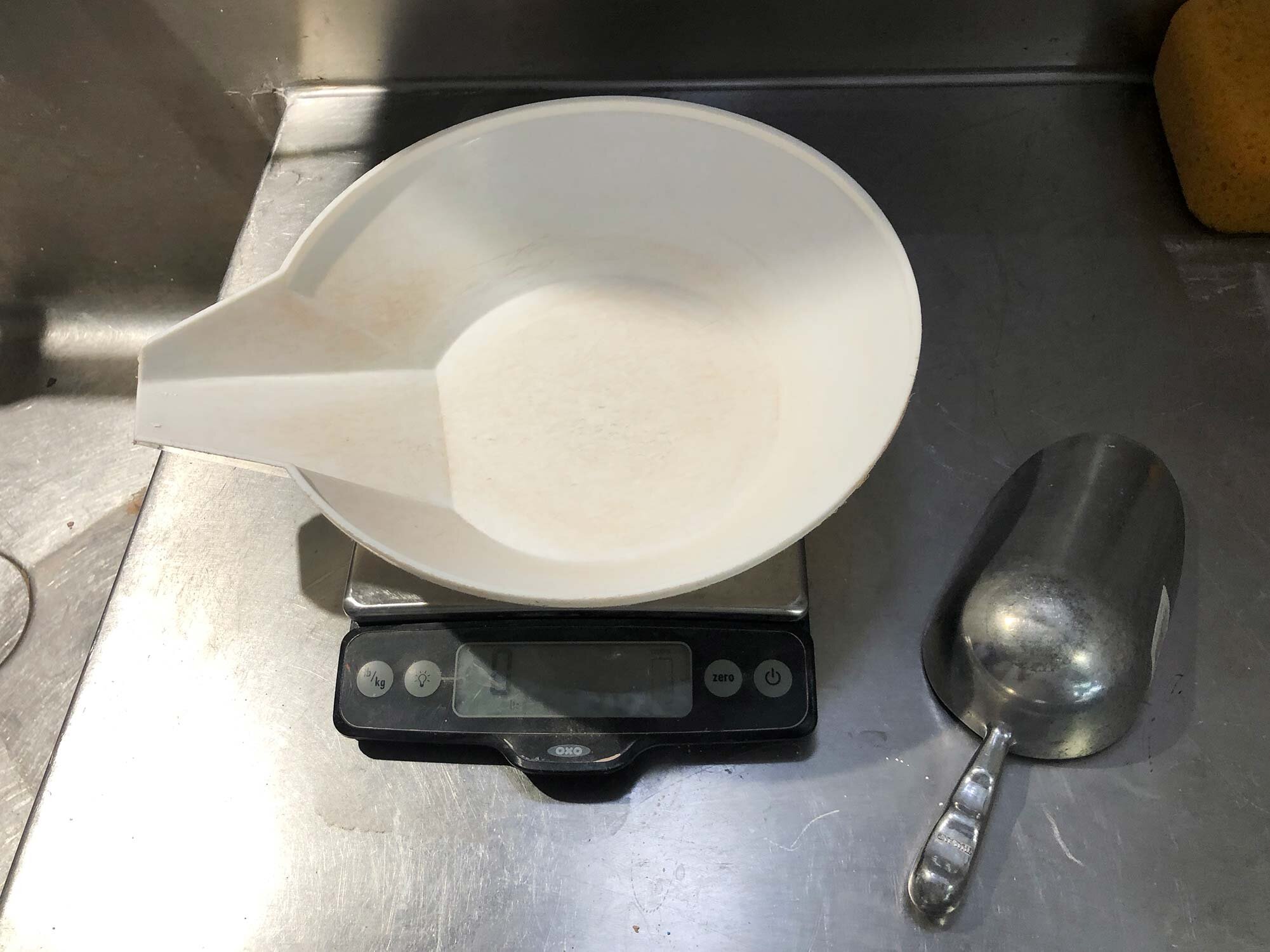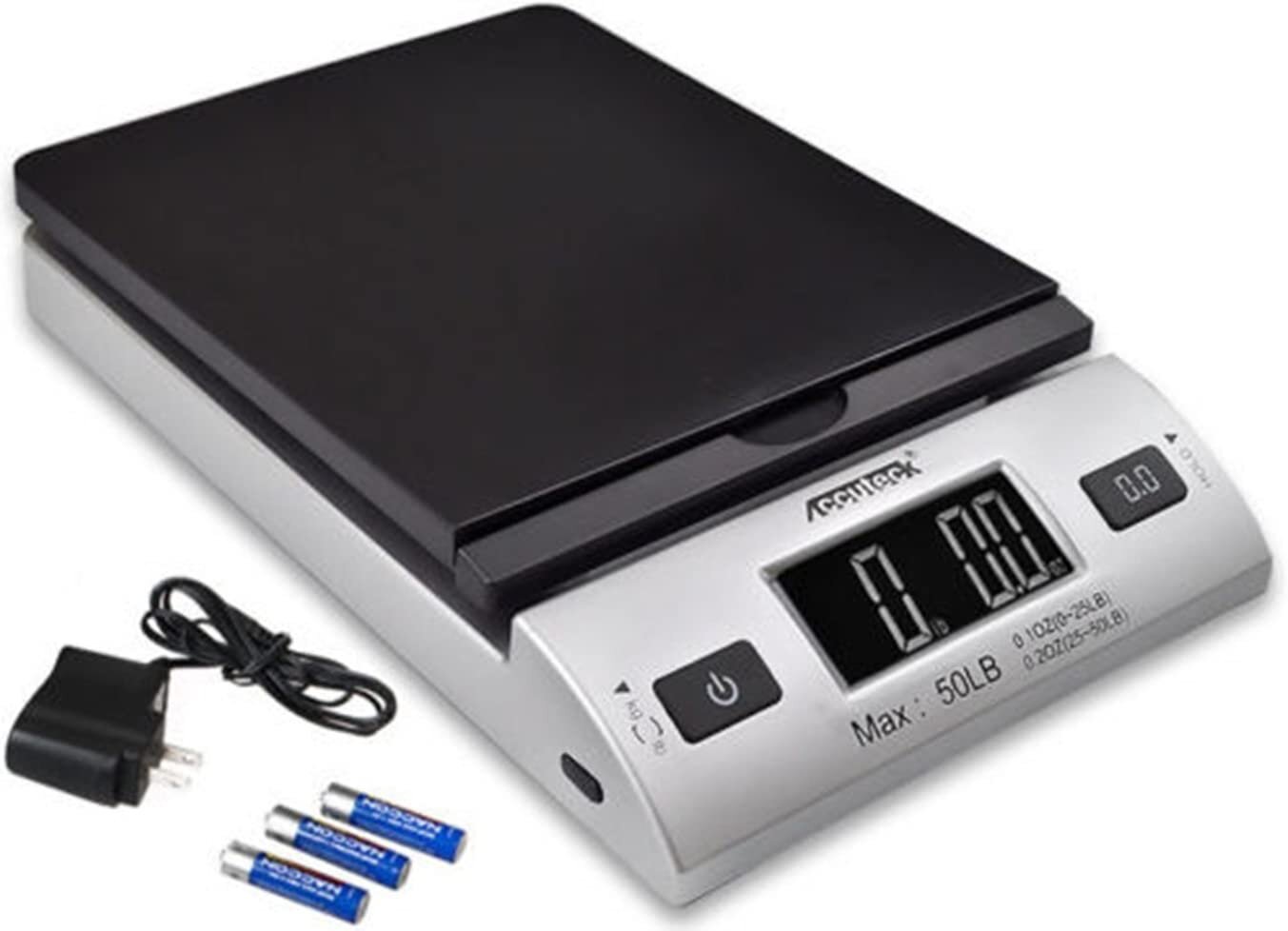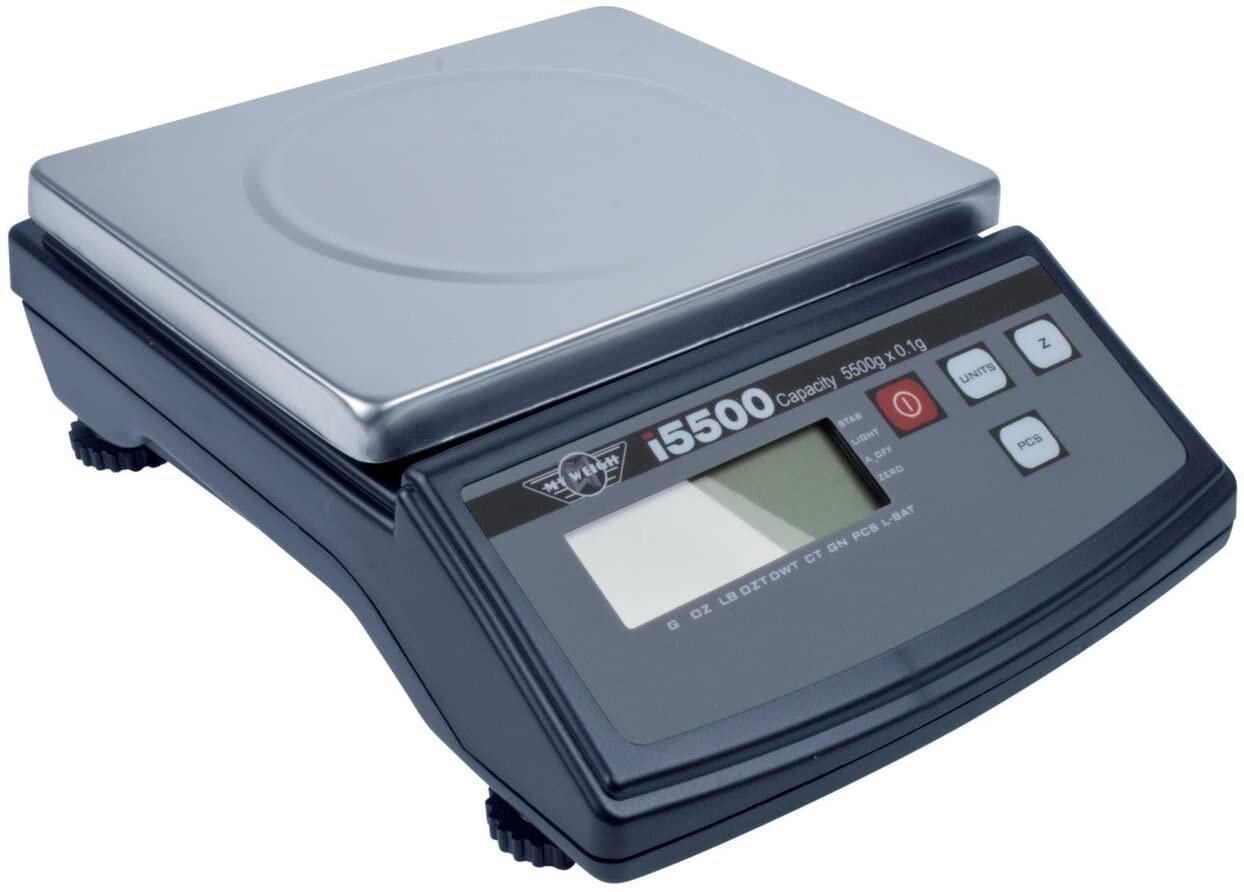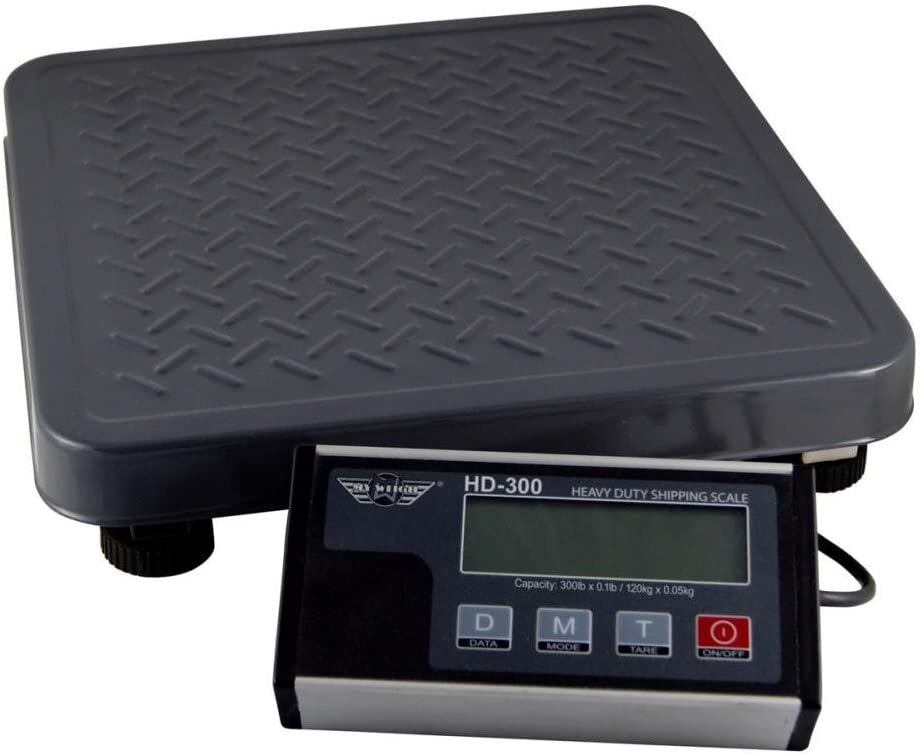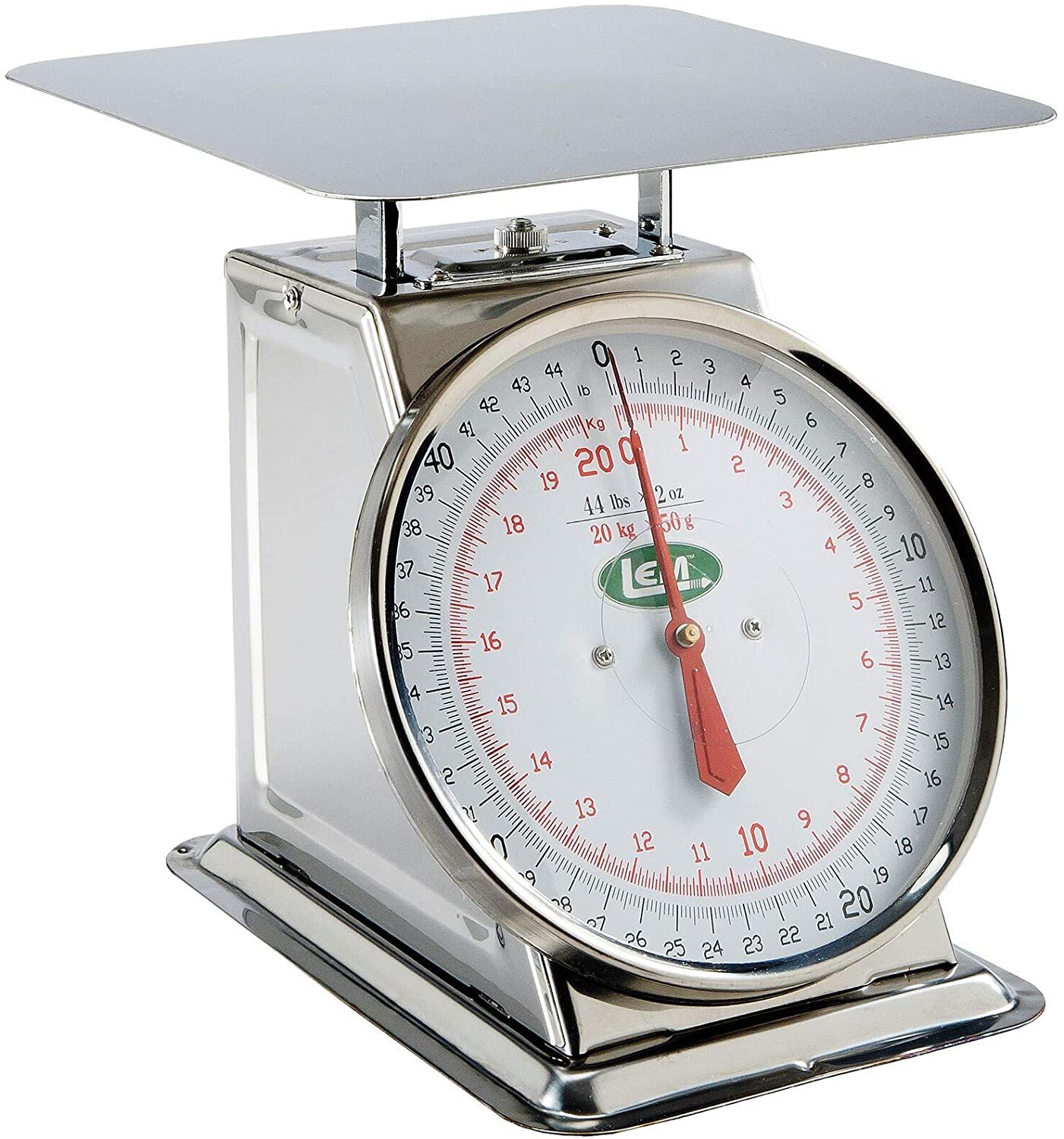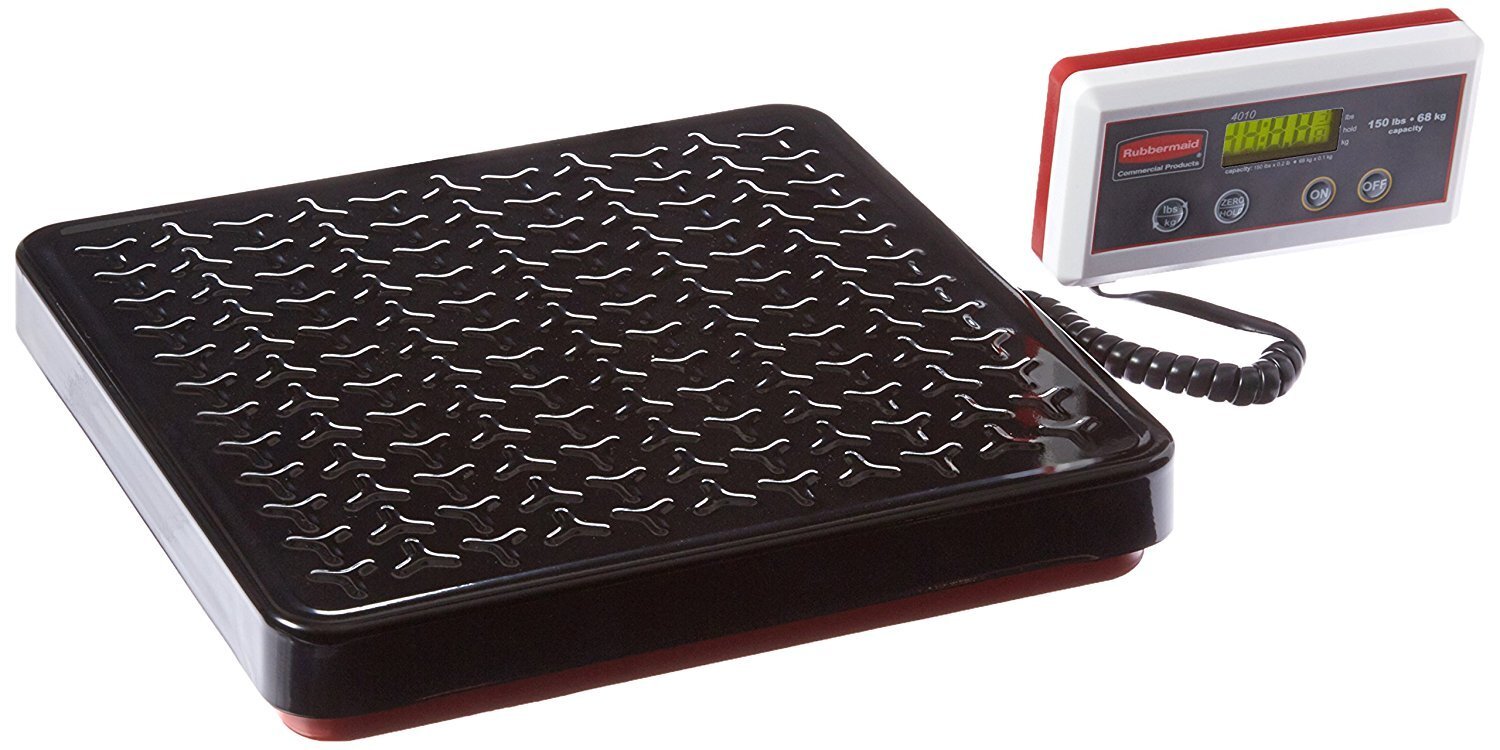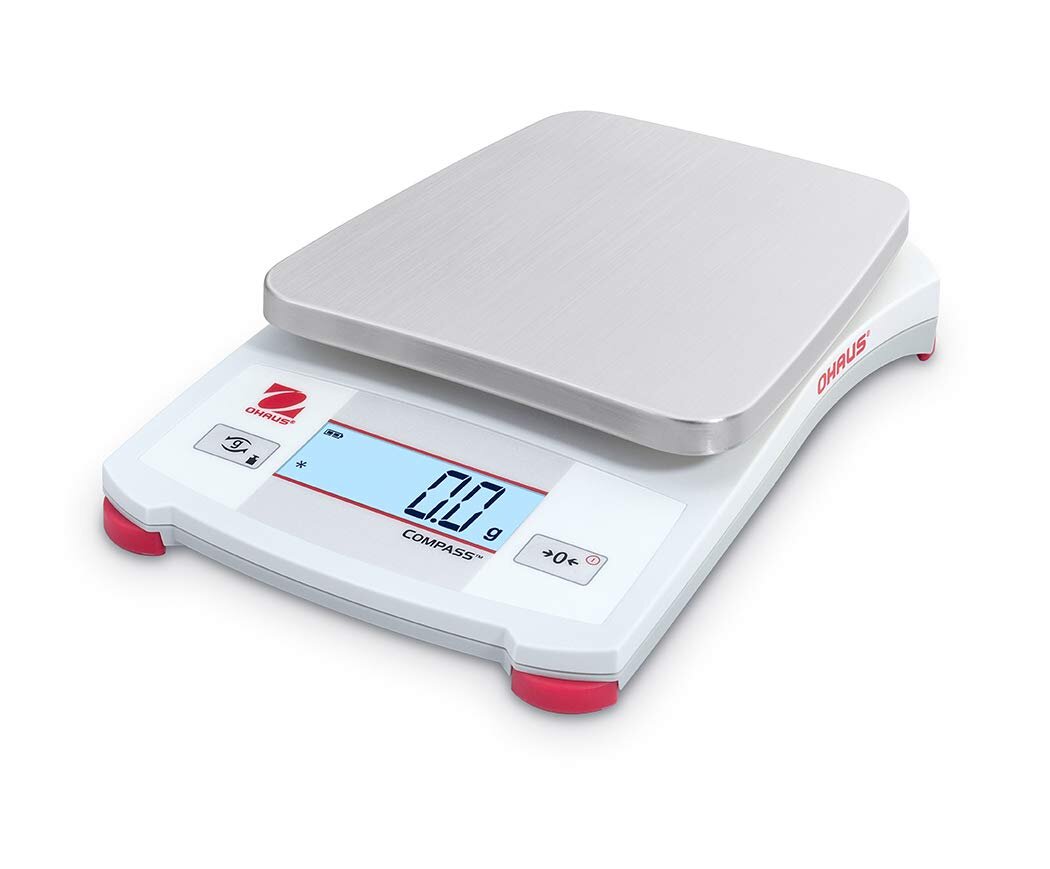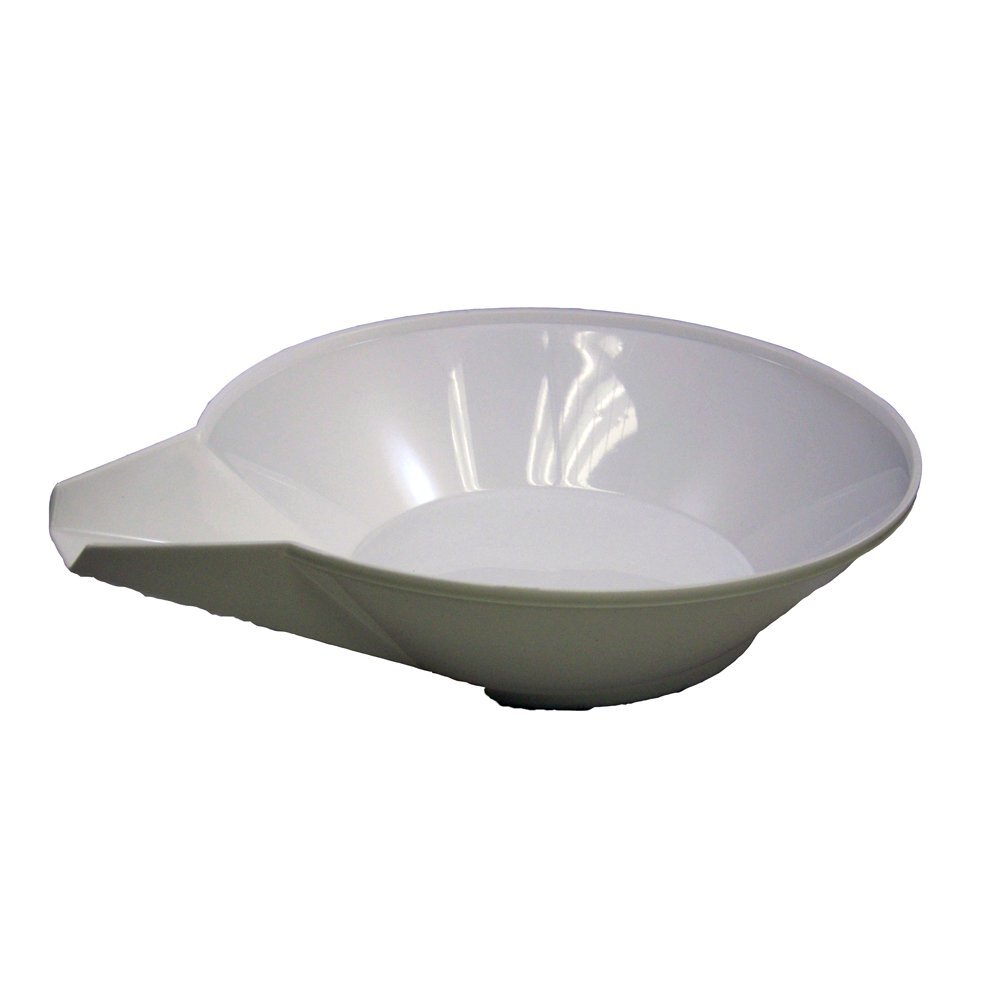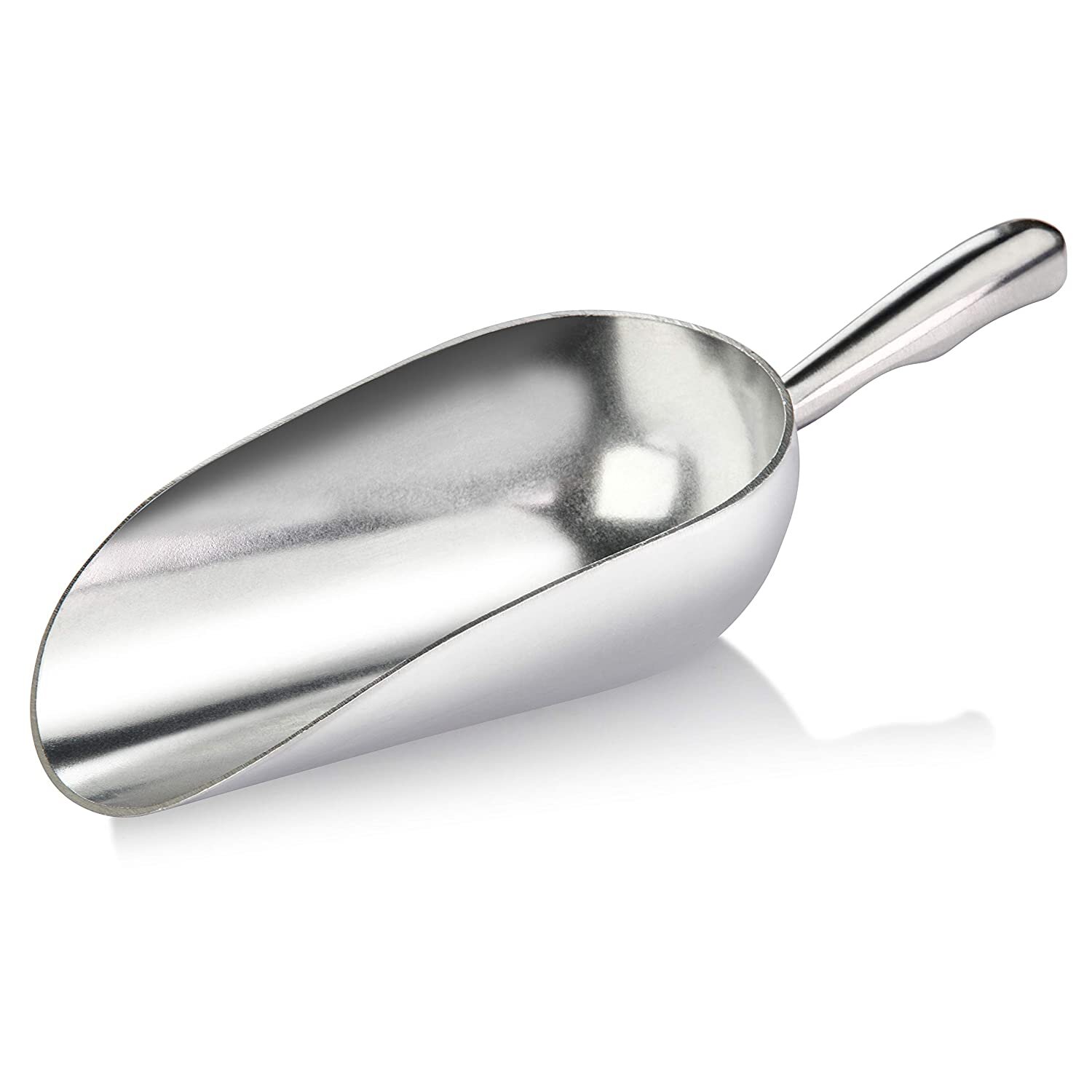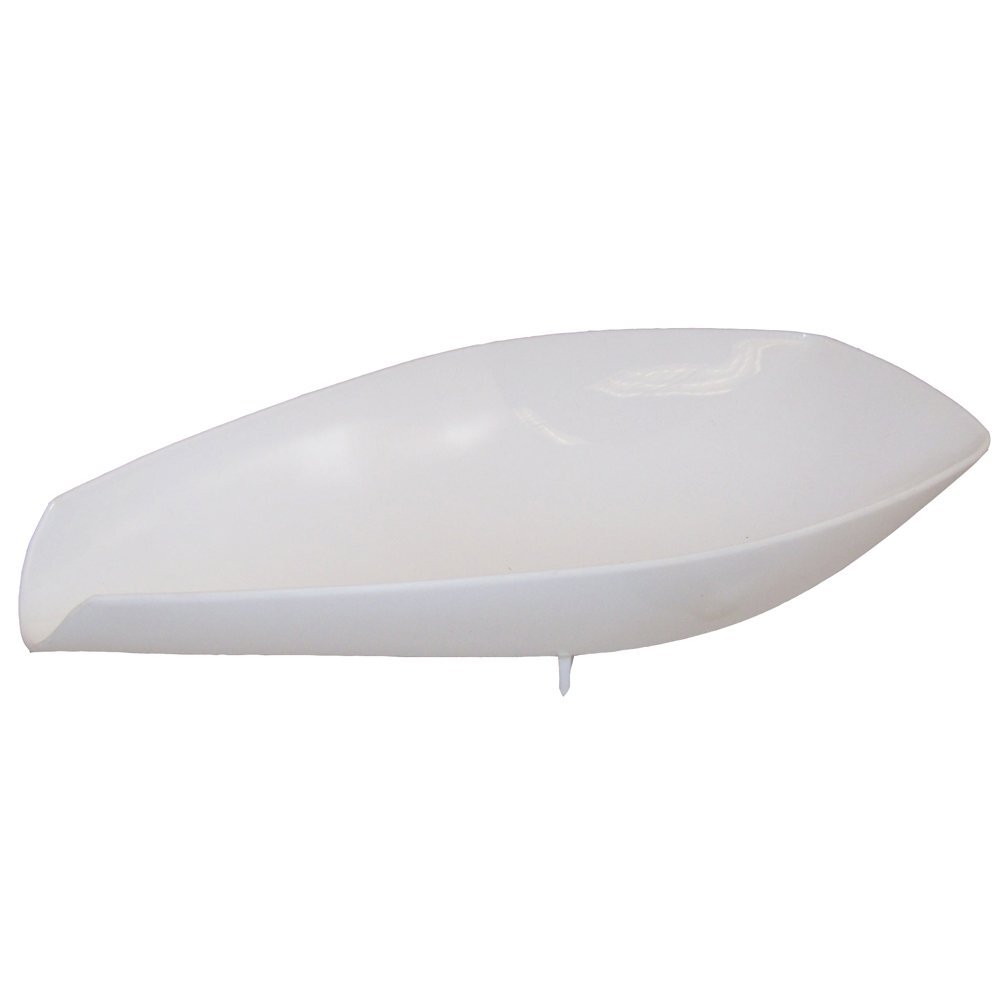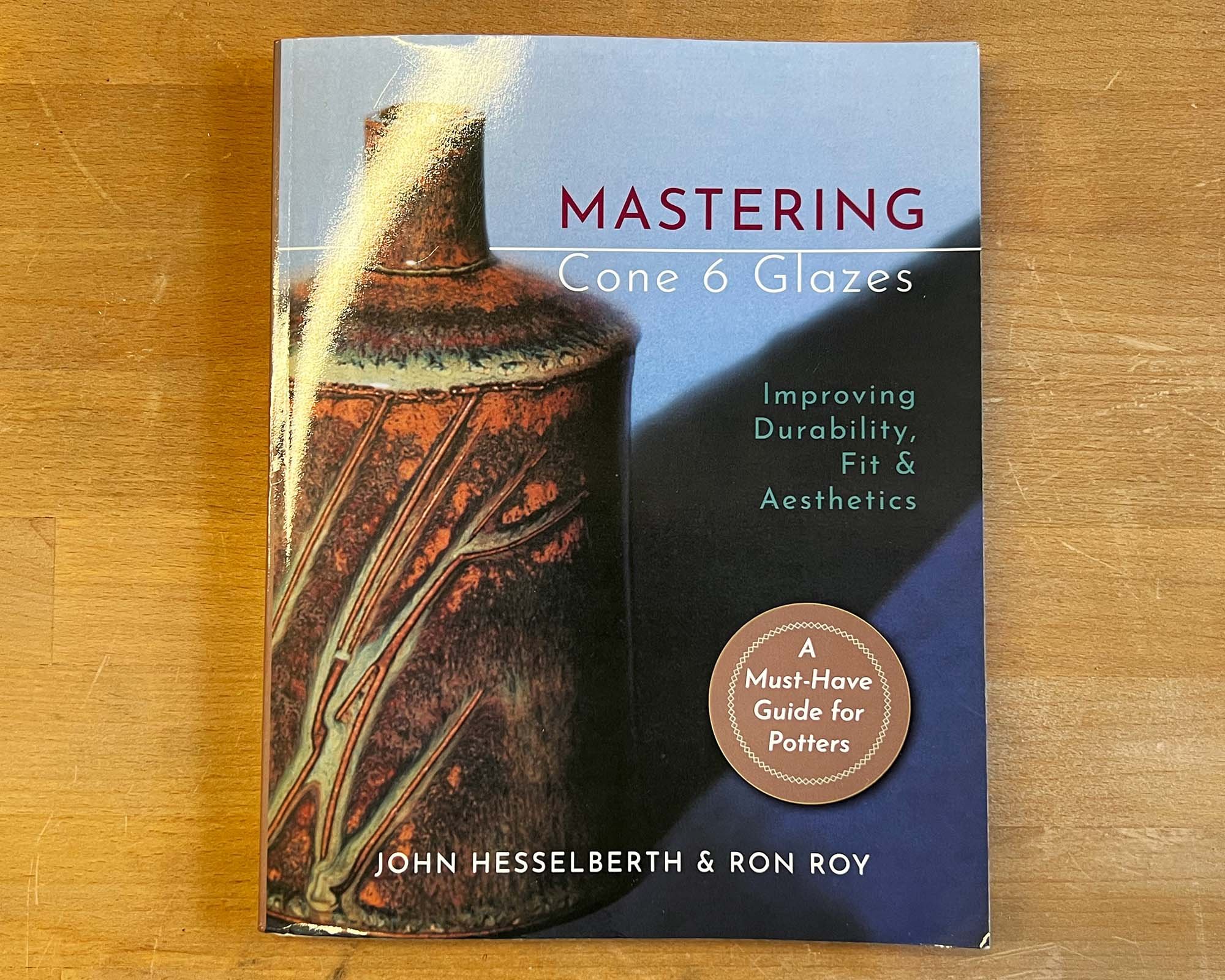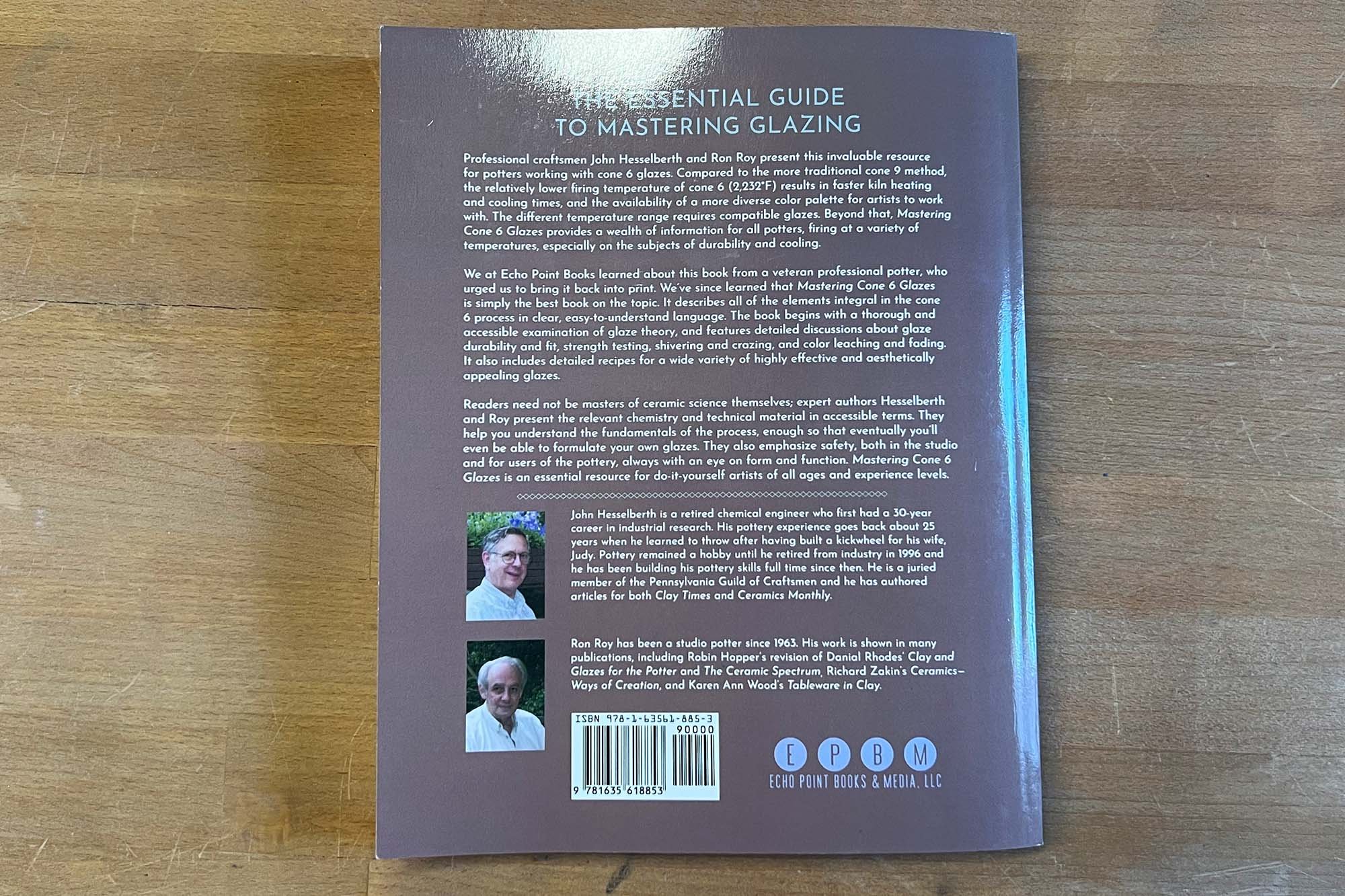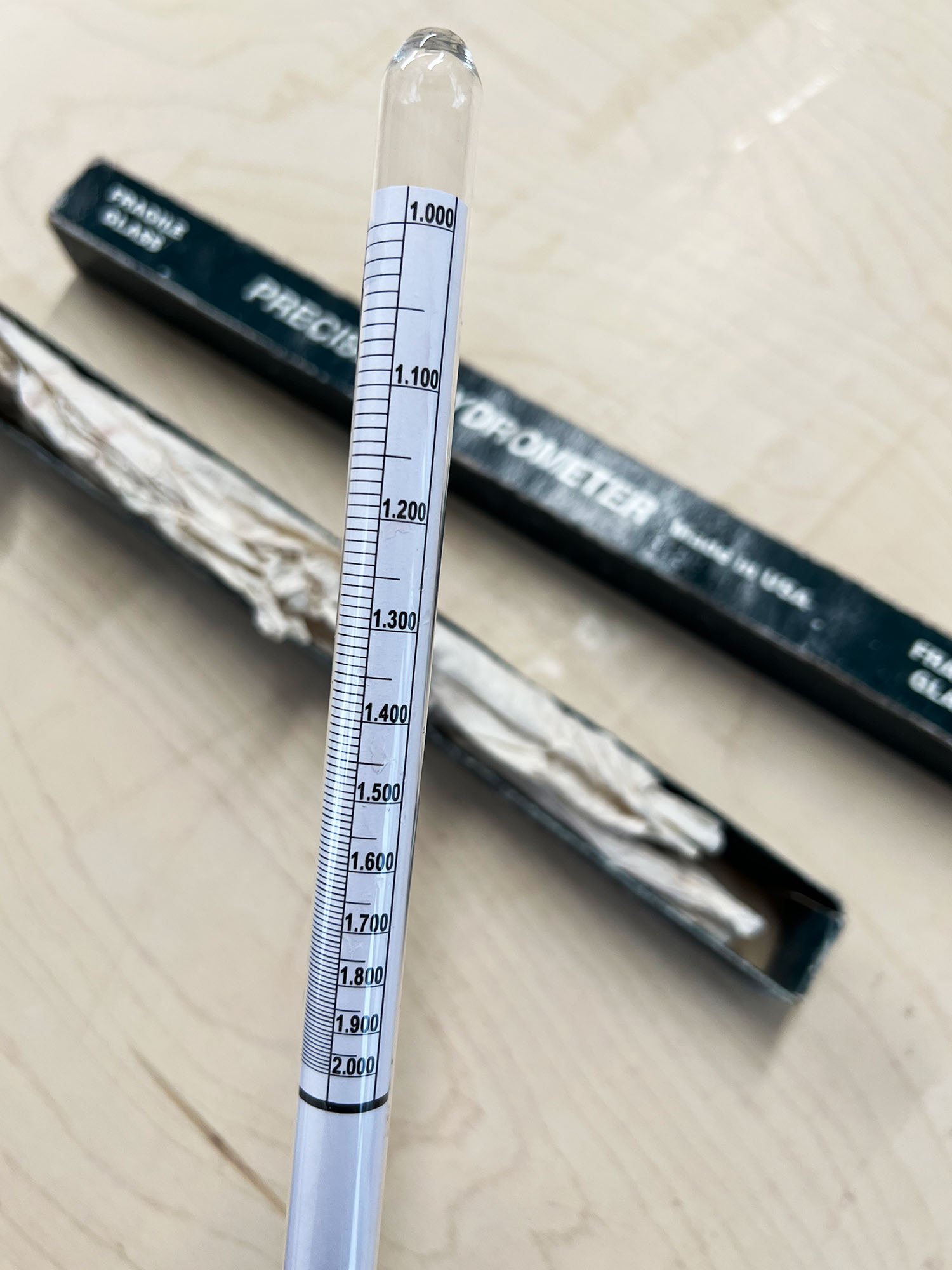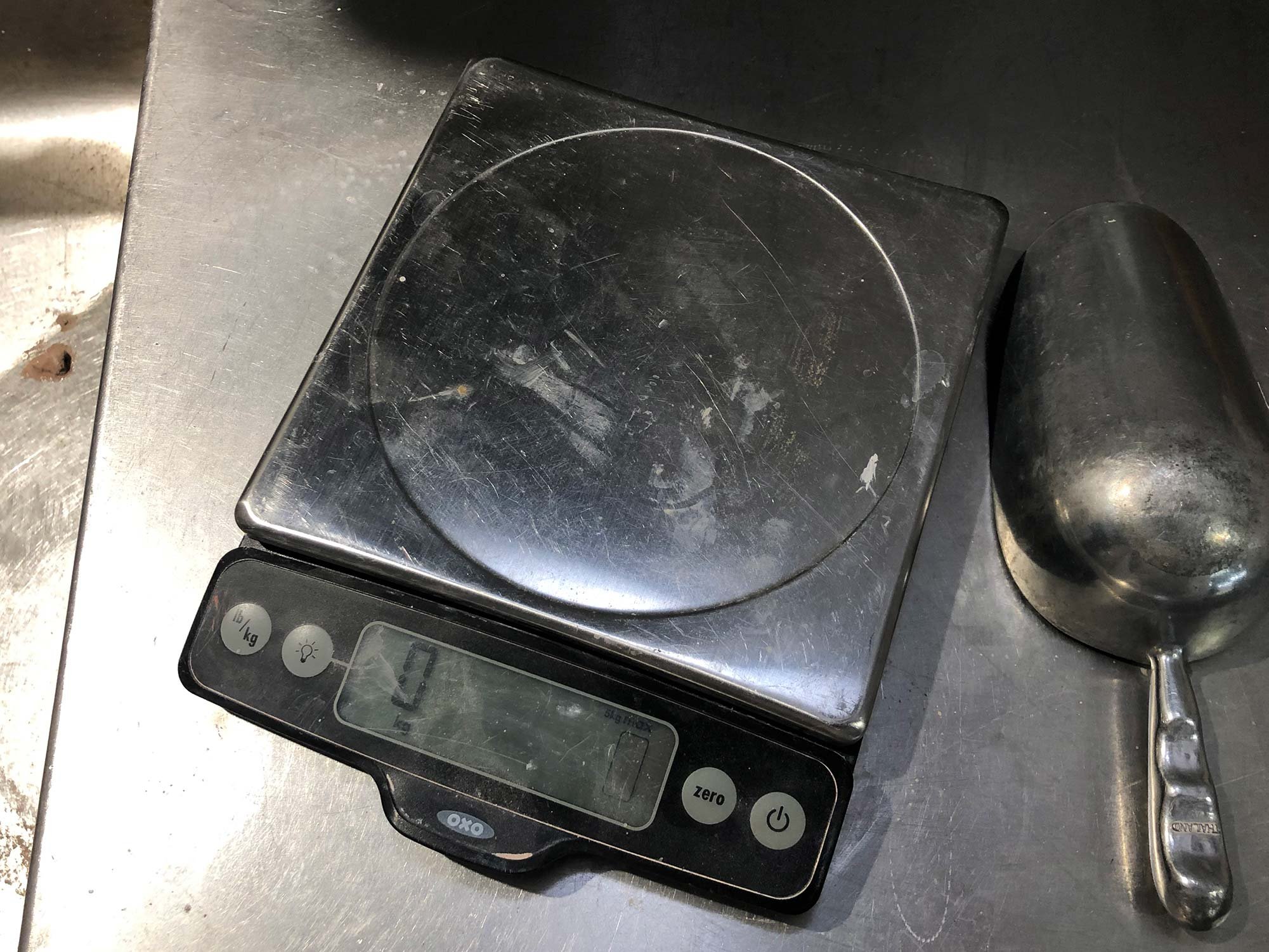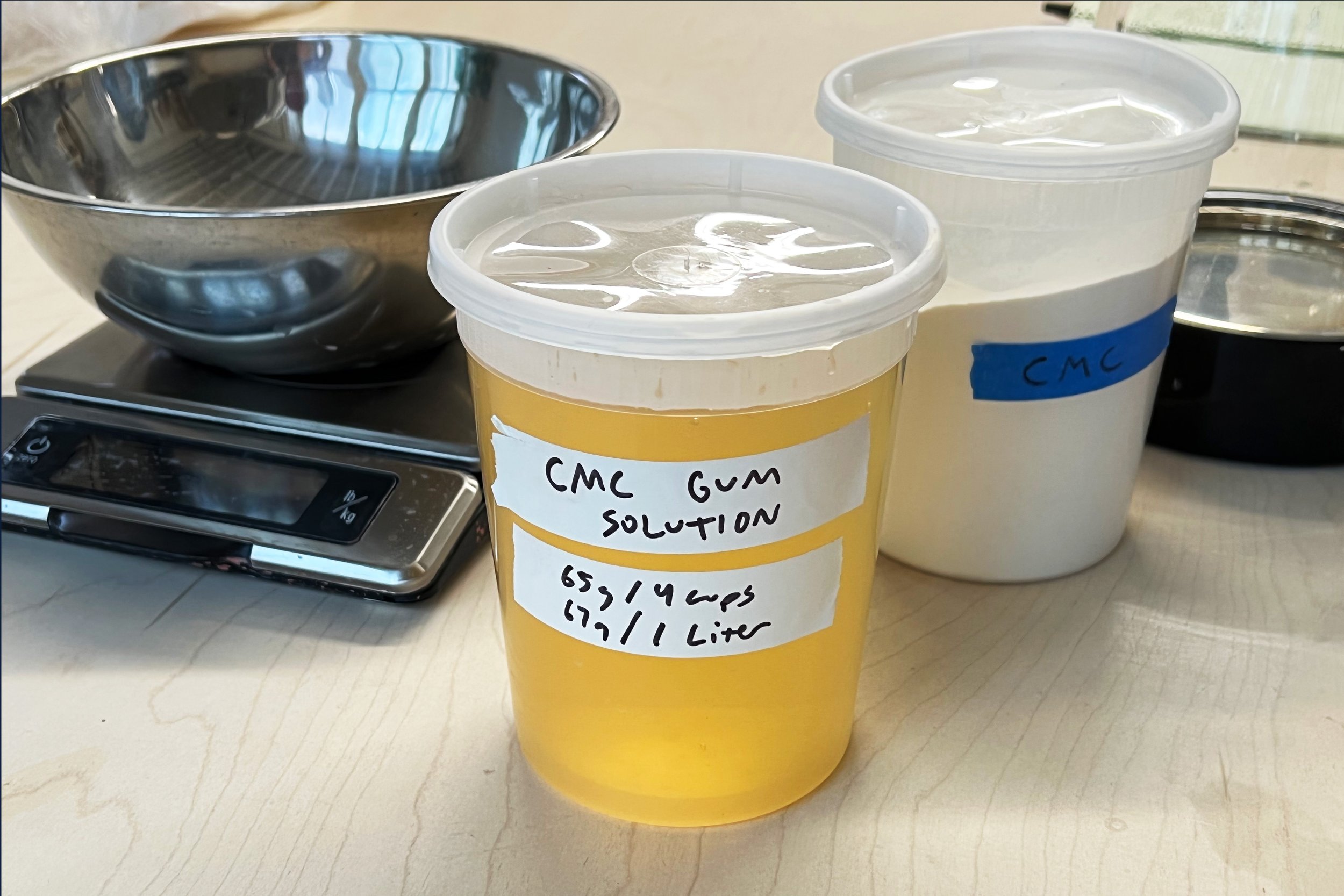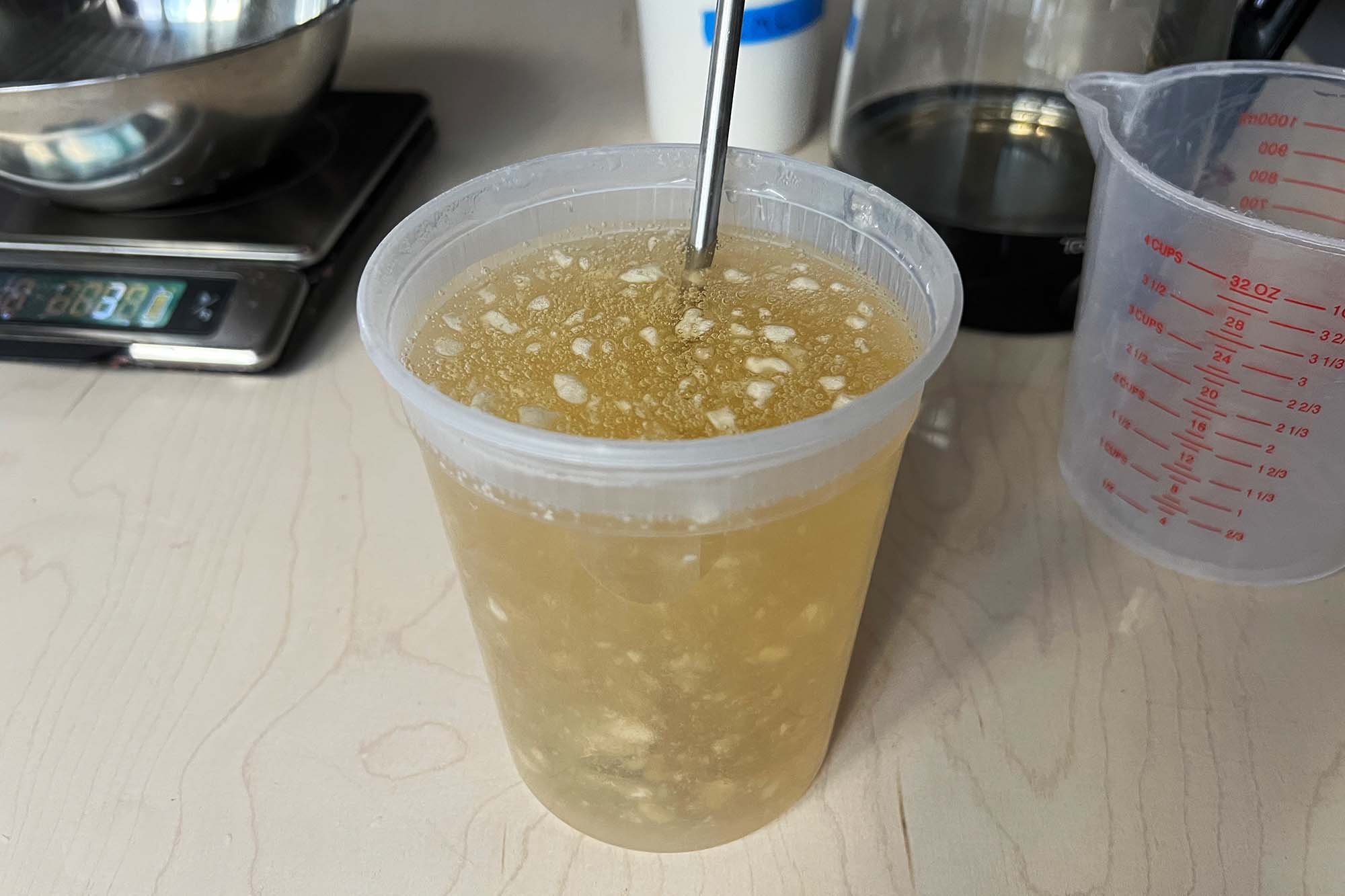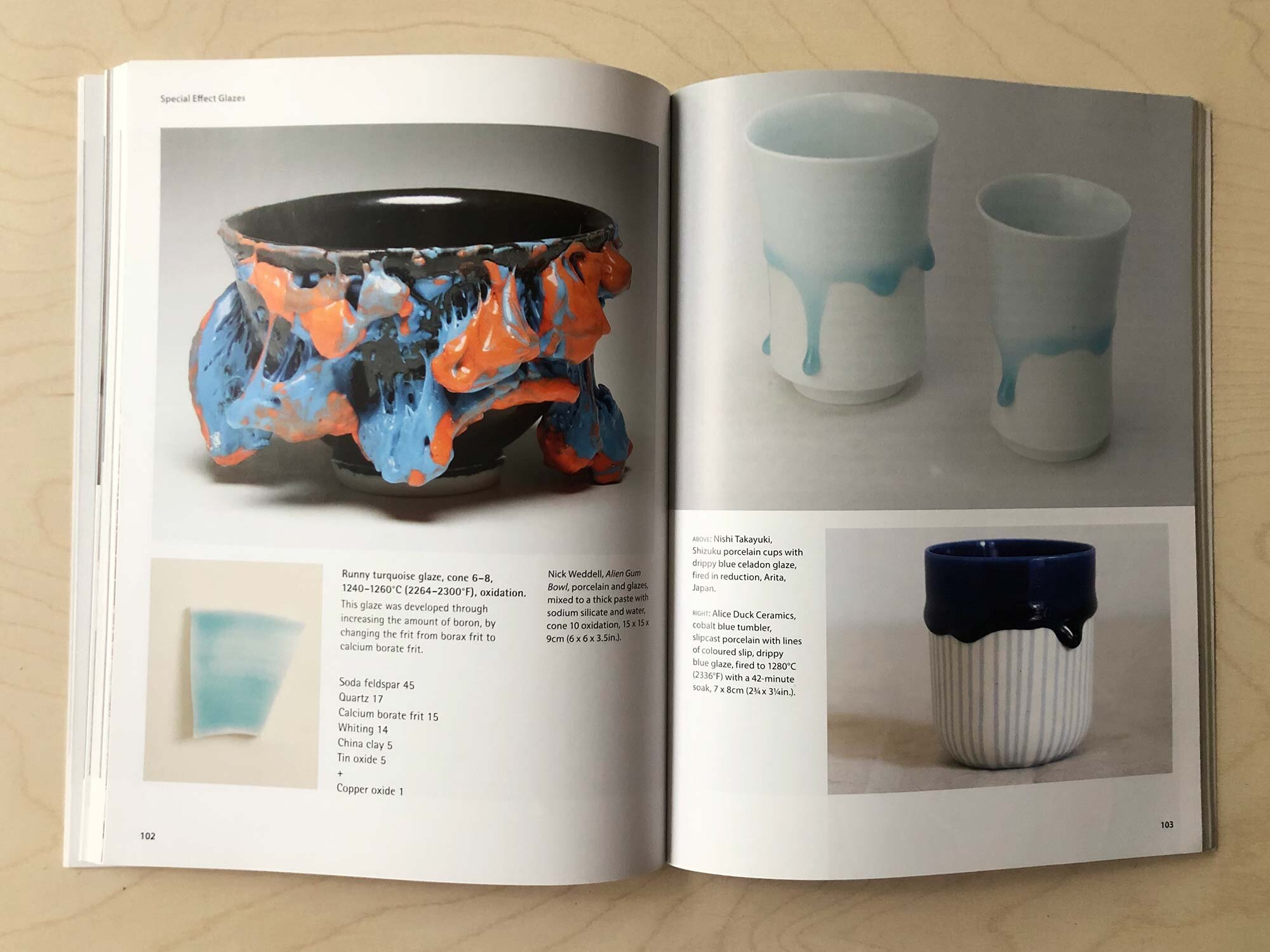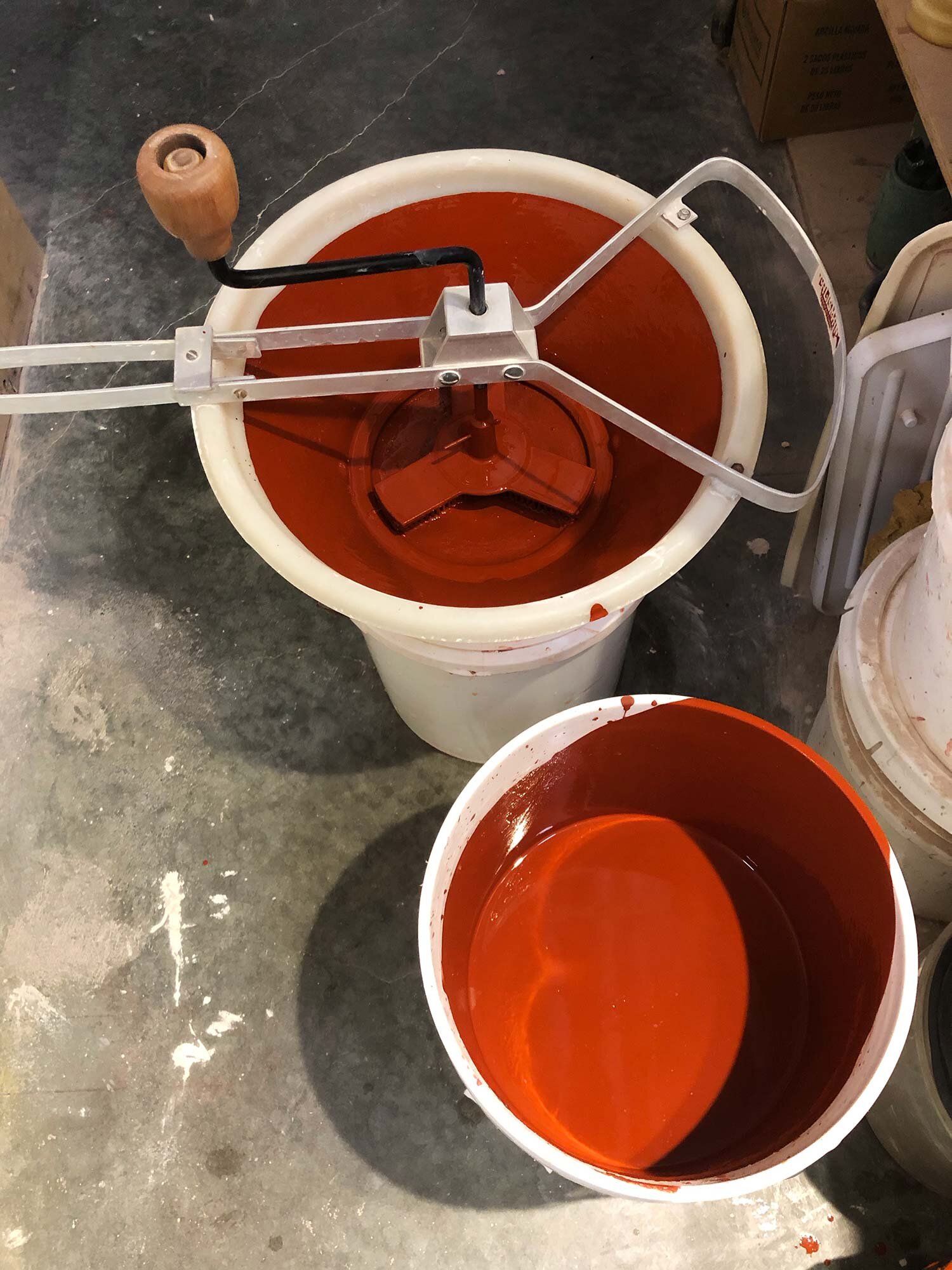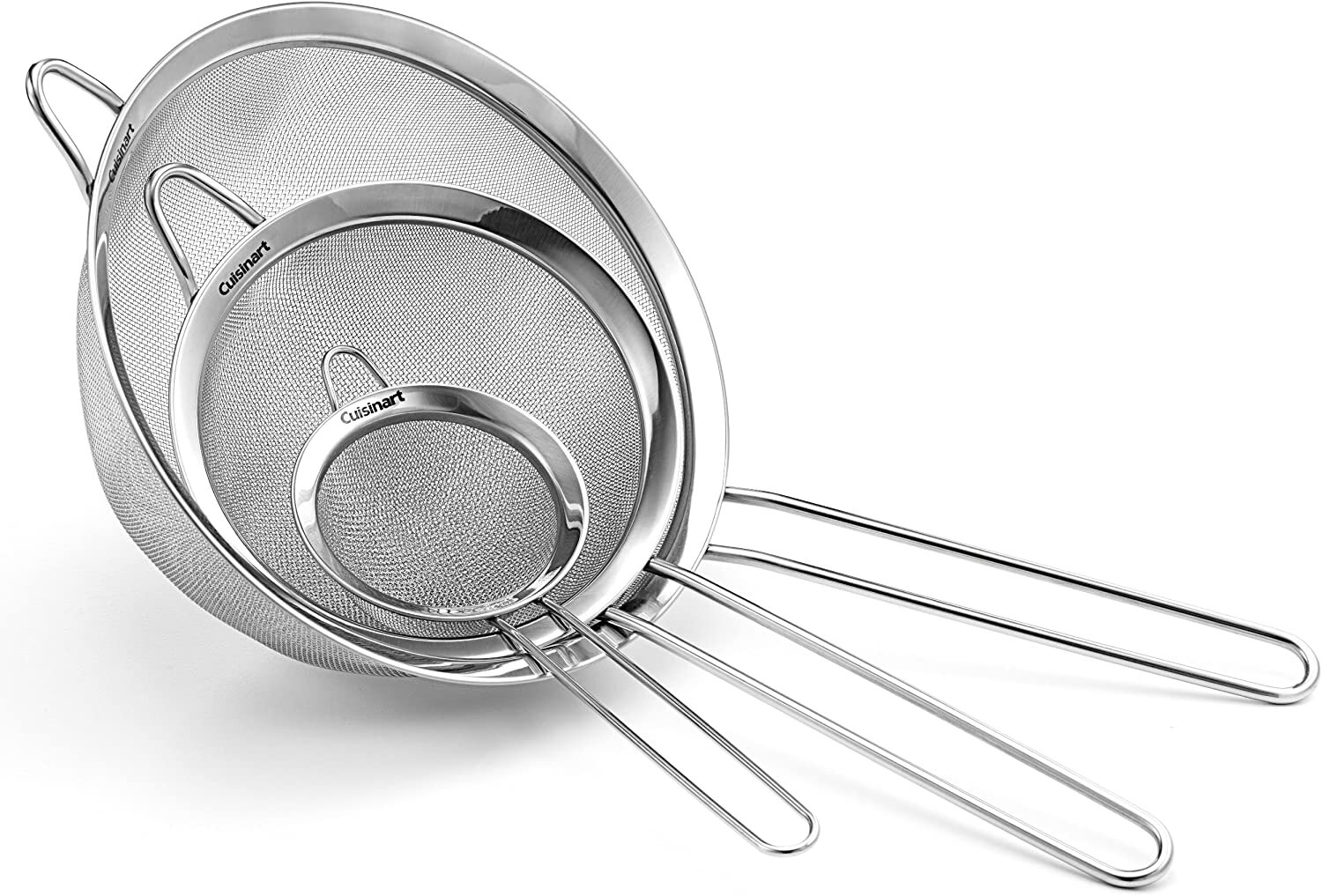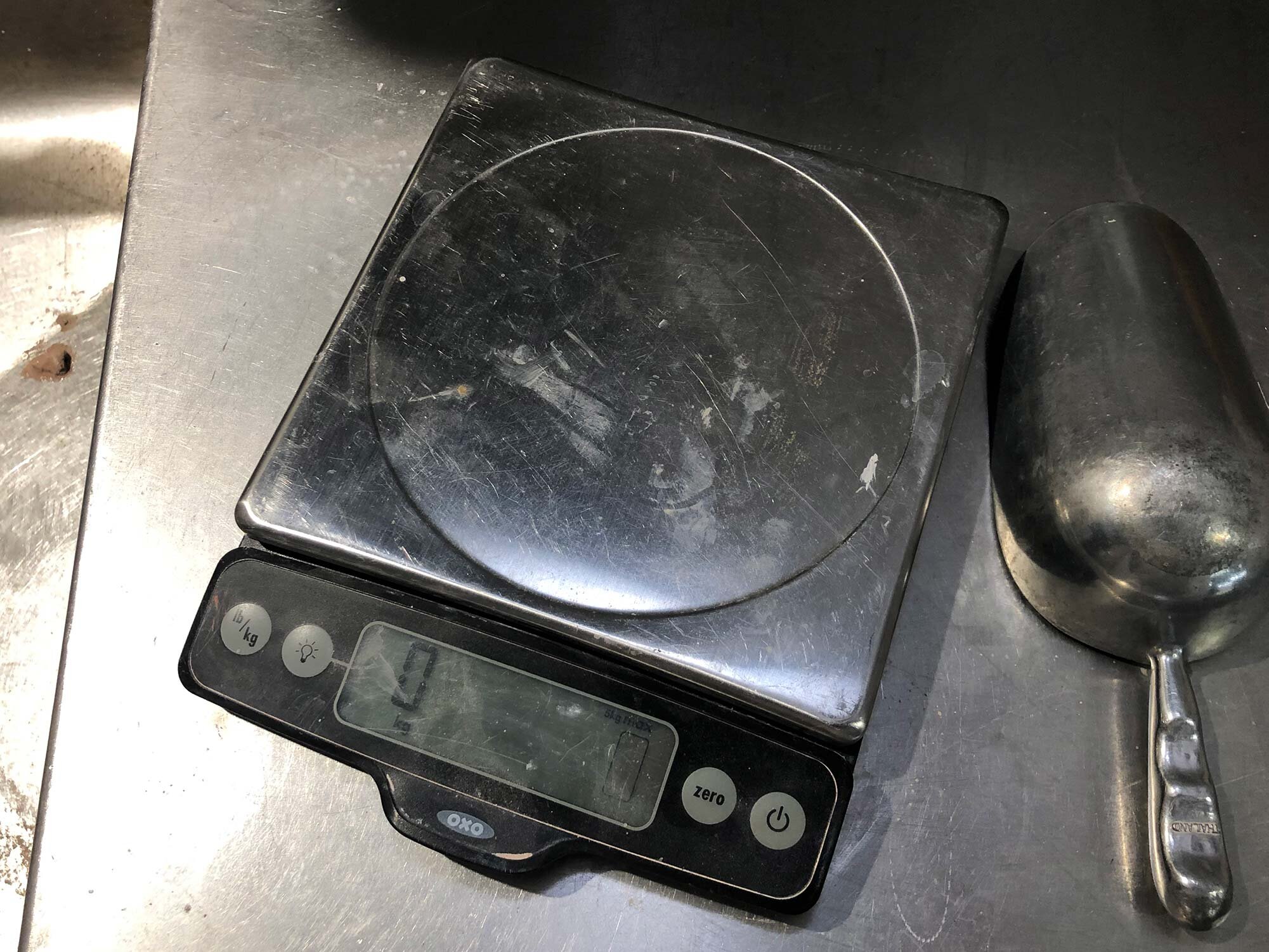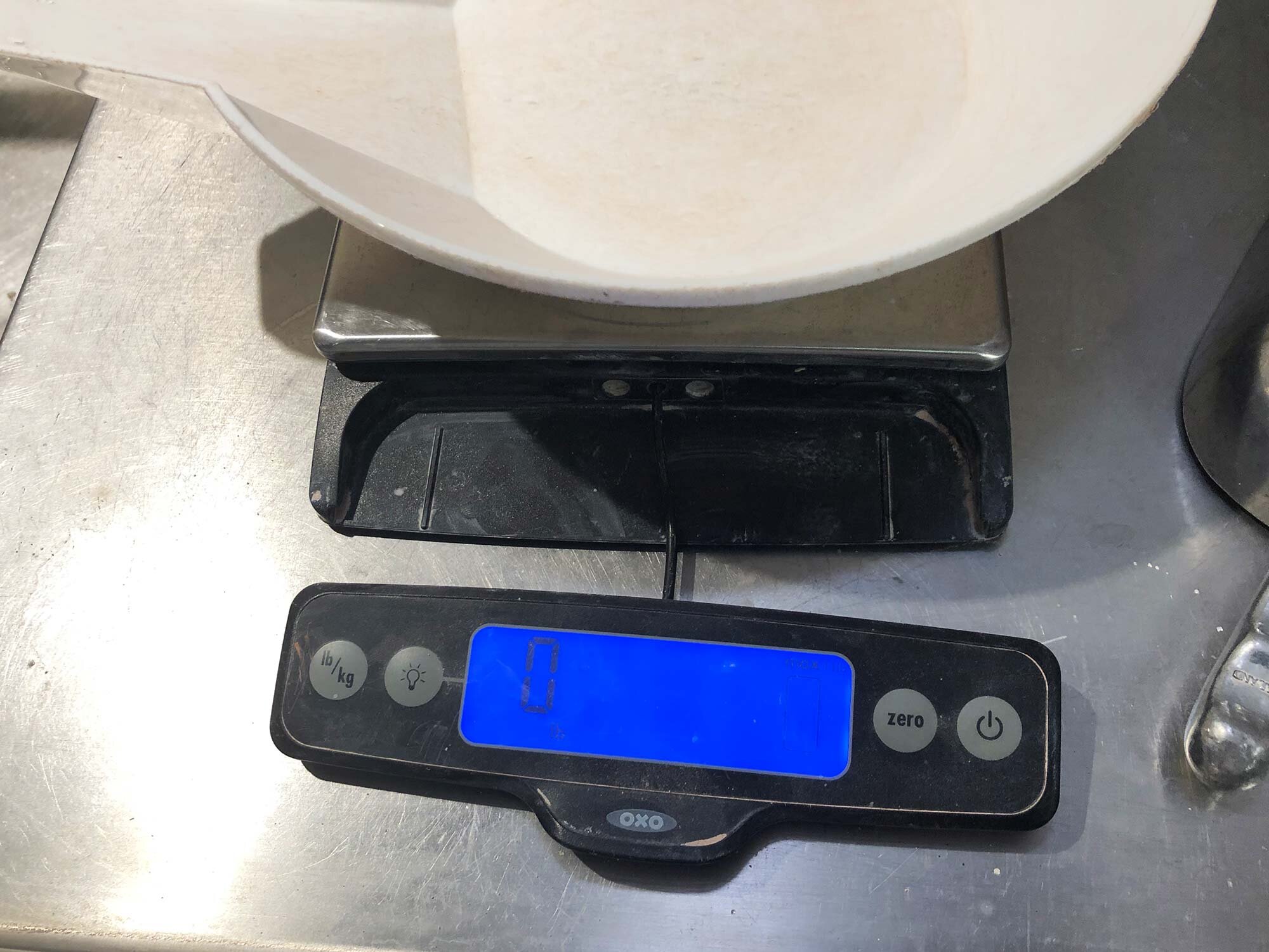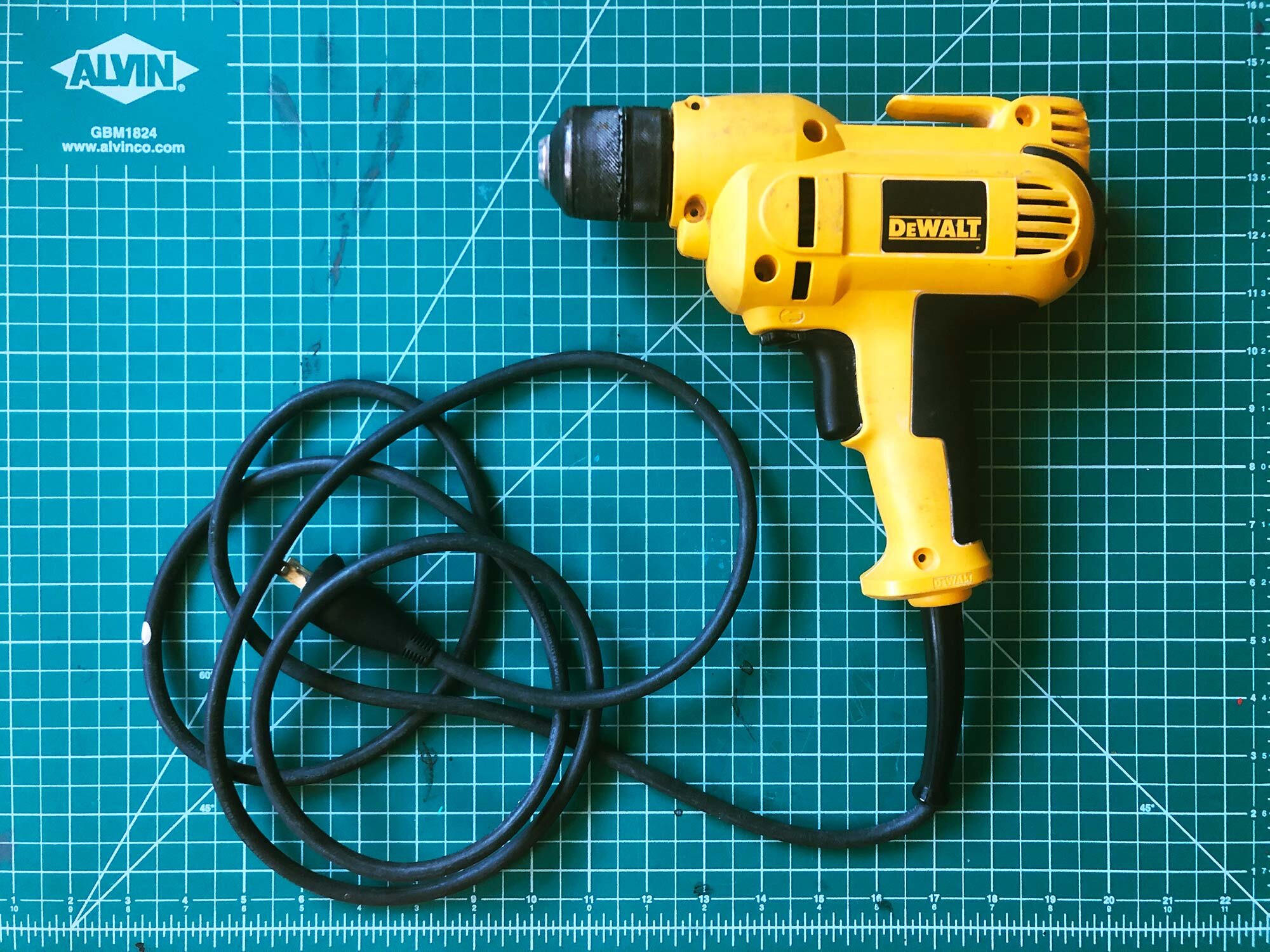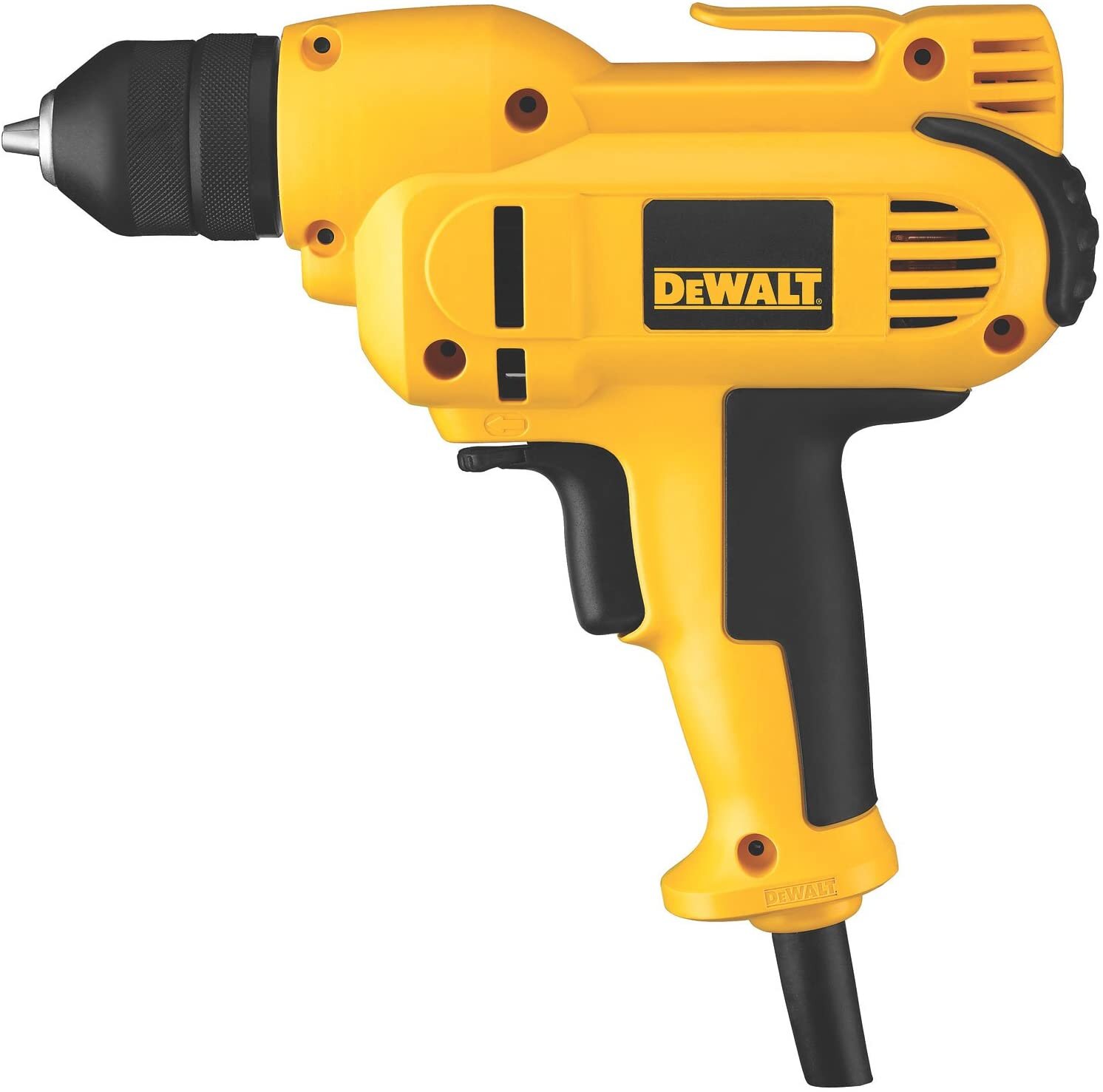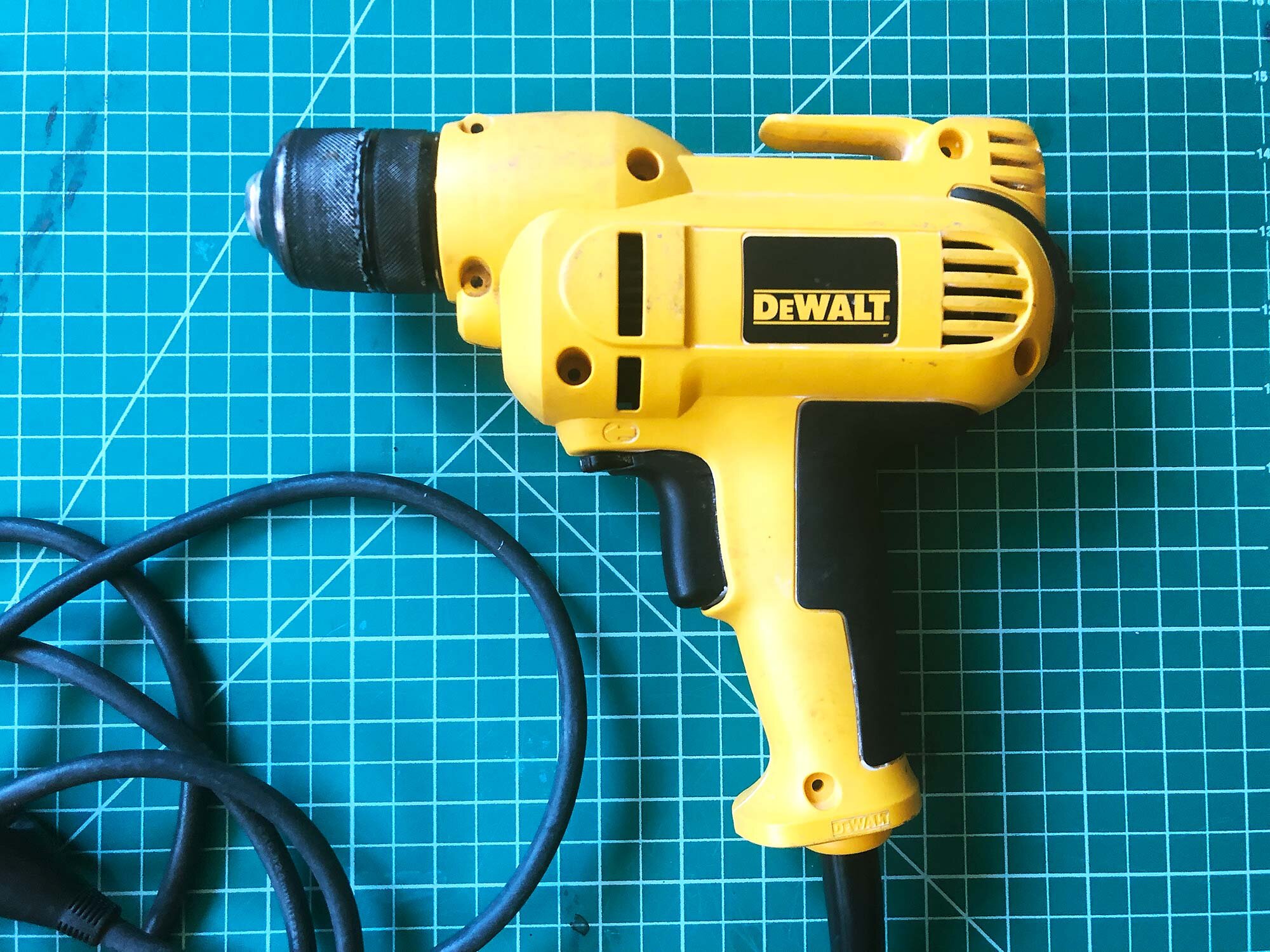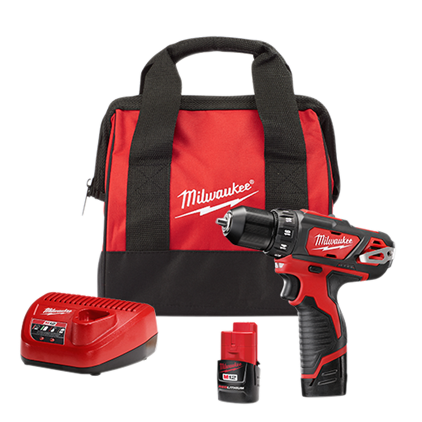A scale for a studio or workshop is a heavily-used tool that needs to be accurate, easy to use, and durable. These days, you can get a great scale without spending a lot of money. This post will cover affordable but durable scales that get the job done and hold up under the heavy use of an academic or community ceramic studio, but they are also great options for a personal studio.
These scales have been tested and used in ceramic studios for measuring glaze materials, or weighing clay, plaster, water, and packed boxes for shipping. The ratings are based on personal experience and observations of scales in use in numerous academic and community ceramic studios.
An older model of the OXO 11 Pound Food Scale purchased around 2018, still going strong. It’s shown here with the Ohaus Maxi-Scoop bowl and a metal scoop.
The OXO 11 Pound Scale has a removable, metal top and a light up display.
TOP PICK: OXO 11 Pound Food Scale
The OXO 11 Pound Food Scale is the top pick for a scale in a ceramics or art studio. With accuracy to 1 gram, this scale has a large enough capacity for smaller batches of glaze or plaster-mixing needs. It’s made for home kitchen use but is super tough and has thoughtful design features such as a pull-out, light-up display. It runs on 4 AAA batteries, and is accurate to 1/8 ounce or 1 gram. It is simply incredible that a scale under $55 is this accurate. For similar or more accurate scales (options like this reviewed below) you’ll easily pay $100 or more.
The pull-out, light-up display on the OXO 11 lb capacity scale (Shop at Amazon)
The scale has two buttons: lb/kg toggle, and power / zero. It’s simple and intuitive, and the pull-out display helps if you are using wide bowls. The top stainless steel platform can also be removed for cleaning.
This scale can accommodate up to 11 pounds or almost 5 kilograms at a time. The display will help you know when you’re reaching capacity by displaying more bars on the right-hand side. When mixing glaze, the 5,000 gram capacity is definitely enough. But if you work with larger amounts of material, a higher-capacity scale is reviewed below.
Prior to working with the OXO 11 Pound Scale, I only wanted to use more professional scales with 0.1 gram accuracy. But this is an affordable, durable, well built, and most importantly, accurate scale. The 1 gram accuracy is exact enough for most purposes, and it will survive many years of use in any studio. I liked this scale so much that I bought the smaller OXO 5 Pound Food Scale for use at home in the kitchen.
A note on 1 gram accuracy: For smaller glaze batches, this may not be accurate enough. For example, if you are trying to measure 10 grams of a material for a 500 gram batch of glaze, being off by one gram might change your results. But as you mix larger batches (typically 3,000 grams of dry materials is about 1 gallon of wet glaze) the 1 gram accuracy is enough. It’s a trade off in price versus accuracy. If you need 0.1 gram accuracy, more accurate scales are reviewed below.
OXO 11 lb Scale, typically $55
OXO 5 lb Scale, typically $32
Accurate to 1 gram
Table of Contents
Top Pick: OXO 11 Pound Food Scale
Budget Pick: Accuteck All-In-One 50 lb Scale
Upgrade pick: MyWeigh iBalance 5500
Heavy Duty / Large Pick: MyWeigh HD-300 Shipping Scale and Accuteck Heavy Duty Scale
Manual Scale Pick: LEM Stainless Steel Scale
Other Scale Options
Scale Accessories
Summary
Budget Pick: Accuteck All-in-One Digital Scale
The Accuteck All-In-One 50lb Digital Scale (Shop at Amazon) is a great budget option. It can weigh up to 50lbs of material, is well-built, and is very affordable—usually priced under $20. It has been a go-to budget scale option for almost 10 years now. It’s not the most accurate, but is great for weighing clay or other general purpose needs.
This scale runs on 3 AAA batteries or an optional 5V plug-in adapter. It is accurate to 0.2 ounce, or about 2 grams. It is definitely not as accurate as our top pick, but if you need something for the occasional glaze batch, it will be ok. It is also great to keep on the wedging table for measuring pieces of clay. If used on a wedging table, it’s not a bad idea to put it in a ziploc bag to keep it clean.
When I originally purchased this, I didn’t expect it to be so well built and have been extremely happy with the purchase. In a world full of low-quality generics and knock offs, I would definitely recommend this scale if you are on a budget. The only drawback is that it is only accurate to about 2 grams. This scale wouldn’t be very accurate if you were measuring small quantities of glaze materials.
Accuteck 50lb Digital Scale, typically $19.99
Accurate to around 2 grams
Upgrade Pick: MyWeigh iBalance 5500
The MyWeigh iBalance 5500 scale is accurate to 0.1 grams and has a 5500 gram / 12 lb capacity.
The MyWeigh iBalance 5500 (Shop at Amazon) is a great upgrade pick for a studio scale. It’s accurate to 0.1 grams while maintaining a large capacity of 5500 grams or about 12 pounds. It has a stainless steel top, optional AC power adapter, simple and intuitive buttons, and a 3 year warranty. The four feet can be independently leveled.
It’s a workhorse for glaze mixing that allows you to do large batches, or fine tune a small amount of material to a high degree of accuracy. You’ll pay more for this specifity — around $250 at the time of this post — but if you need the range from a few grams to larger amounts, this scale will deliver. There are other models in the MyWeigh iBalance line too, ranging up to 11,000 gram capacity.
MyWeigh iBalance 5500, $249
Accurate to 0.1 grams
Heavy Duty Picks
You may need a few different scales for all your needs in the studio. If you weigh and ship large boxes or mix plaster, a wider heavy duty scale is what you need. The go to for this category used to be the Rubbermaid Scale, but a few years back that was changed to only be accurate to about 1/2 a lb while still costing over $200.
Previously, this guide recommended the MyWeigh HD-300 Shipping Scale. It’s a great scale and while it still seems to be available a few place, it is harder to find. It’s around $100 and is very sturdy and should last a lifetime.
This guide is now also recommending the cheaper Accuteck Heavy Duty Scale. At only $42 it is quite affordable and while it is used in many studios, it doesn’t have the overbuilt quality of the MyWeigh HD-300, so be sure to treat it carefully.
The Accuteck Heavy Duty Scale features a metal top while still maintaining a thin build.
Accuteck Heavy Duty Scale
The Accuteck Heavy Duty 440 lb Shipping Scale (shop at Amazon) is a great deal at $42, and will provide a scale that can weigh large boxes, plaster, buckets of water, or large amounts of clay or glaze materials. It runs on 4 AAA batteries or a 9V plug, which is included.
It is accurate to 50 grams or 0.05 lbs, which is quite good for a scale of this size. Just don’t use it for small batches of clay or glaze tests.
It is not the strongest build, there are tradeoffs for getting something this cheap, but it will serve you well if you treat it carefully. It is thinner and takes up less space than the MyWeigh HD-300 reviewed below, so that may be a plus if you need something like this but have limited space.
Accuteck Heavy Duty Scale, $42
Accurate to 50 grams
The MyWeigh HD-300 Shipping Scale is a workhorse of a scale with a beefy build quality.
MyWeigh HD-300 Shipping Scale
The MyWeigh HD-300 Heavy Duty Shipping Scale (shop at Amazon) is the top pick for a shipping scale, but it’s also accurate enough for large batches of plaster, concrete, or other studio materials. It can measure up to 300 pounds with an accuracy of 0.1 lbs or to within about 2 ounces. It has a steel top and a remote display on a six foot cord, so you can easily get the weight of even the largest package. It’s powered by 4 AA batteries or an optional AC power adapter. It also has a built-in USB port, if you want to set up communication with printers or other devices. Finally, it has adjustable feet and easy to clean surfaces. This is a great heavy duty scale that comes in around $130. There are plenty of cheaper shipping scales, but if you read online reviews closely, you’ll see that they fail or are inaccurate, while this scale is built too withstand the test of time.
MyWeigh HD-300 Heavy Duty Shipping Scale, 300lb limit, $130
Accurate to 0.1 lbs or about 50 grams
For a complete look at Heavy Duty Scales, click here.
Manual Scale Pick: LEM Stainless Steel Scale
The LEM Stainless Steel Scale.
The LEM Stainless Steel Scale is a great option for weighing wet clay, plaster, or as a shipping scale. It has a 10” x 8” steel platform, and can weigh up to 44 lbs / 20 kg with an accuracy of 2 ounces or around 50 grams. It’s not accurate enough for mixing glazes, but for just about everything else, this is a great option that is affordable, durable and doesn’t need any batteries or plugs. Sometimes it’s good to keep it simple and for $50, you can’t go wrong with this scale.
LEM Stainless Steel Manual Scale, $50
Accurate to 50 grams
Other Scale Options
Rubbermaid Commercial 150lb Digital Scale
The Rubbermaid Commercial 150 Pound Scale is another option for a rugged scale that can measure packages, plaster, or any type of material.
It has a wide metal platform, and the display can be mounted on the wall or pulled to the side with a 9 foot cord. The scale has a capacity of 150 pounds or 68 kilograms, and runs on a 9V battery or option AC adapter.
The drawback of this scale is that it is only accurate to about 1/2 pound. Previous models of this scale were more accurate to around 2/10 of a pound, so it is disappointing that Rubbermaid has let the quality drop. There are also complaints online about this unit, specifically the controller, breaking after a few months of use. That hasn’t been my experience though, so I would still recommend this with the caveat that you treat the control / display panel carefully. It’s priced about the same as the MyWeigh shipping scale, or around $130.
Rubbermaid Commercial 150 lb Digital Scale, $173
Accurate to 0.5 lbs
The Ohaus CX1201 Scale, 1200 gram capacity with 0.1 gram accuracy.
Ohaus Digital Scale
Ohaus is one of the most trusted names in scales, and the the Ohaus Portable Balance CX1201 is accurate to 0.1 grams with a capacity of 1200 grams or about 2.6 pounds. It costs almot $150 and runs on 3 AA batteries or an optional plug.
I prefer the larger capacity of the MyWeigh 5500, but this scale has a balance of accuracy, cost, and quality that is hard to beat. If you regularly measure smaller batches of glaze and need 0.1 gram accuracy, this scale will deliver.
Ohaus Portable Balance CX1201, $149
Accurate to 0.1 gram
Triple Beam Mechanical Scales
The Ohaus Triple Pro Scale
Not as common now, but these used to be the standard for glaze labs. Now, almost everyone has switched to digital scales. I definitely have. But, if you want to go old school or want to keep it simple and not worry about batteries or breakdowns, a triple-beam scale is the way to go. They are extremely accurate, long-lasting, and durable. It just takes a bit longer to get a measurement.
There are a variety of generics out there, and Ohaus makes a few models of triple beam scales. The basic model will weigh up to 610 grams and retails for $139. That’s not much weight, but it is accurate to 0.1 grams.
For a larger capacity, look at the Ohaus Triple Pro Mechanical Triple Beam with a 2610 gram capacity that is accurate to 0.1 grams. The scale has a basic capacity of 610 grams, but you can add counterweights to increase the capacity to 2610 grams. If you want to invest in a long-term piece of equipment, this is the kind of tool you could pass down to your grandchildren. It retails for $206.
The generic brand QWORK makes a very similar scale with a 2610 gram capacity and 0.1 gram accuracy for just $60. It has a lower build quality than the Ohaus, but it is significantly cheaper.
Ohaus Triple Pro Scale, 2610 gram capacity, $206
Accurate to 0.1 grams
Ohaus 610 Gram Scale, $139
Accurate to 0.1 grams
QWORK Triple Beam, 2610 gram capacity, $60
Accurate to 0.1 gram
Favorite Scale Accessories
A scale scoop is great for weighing dry materials.
Scale Scoop Bowl
A plastic bowl with a pouring spout, such as a scale scoop, is my favorite bowl to use on a scale. They do cost extra, but the upgrade might be worth it for your studio. Usually around 10 inches wide with a pouring spout, you can get quite a bit of dry material piled up in this bowl. Of course, you can use any sort of bowl to measure dry ingredients, but this one just seems to be ideal for scales and it’s the one I reach for first when I’m mixing glazes.
If you see the Ohaus Maxi-Scoop, that’s a great option.
Another option is the Penn Scale Scoop, which is 10 inches wide at the rim, 2.75 inches tall, and has a 6 inch wide base. It’s listed at $33.
Metal Scoops
Metal scoops are the easiest way to pick up glaze materials, plaster, or any dry material. They are also long lasting and easy to clean. A variety of sizes works, or some people like to keep an individual scoop in each bucket of material.
Ohaus Footed Scoop Bowl
The Ohaus Footed Scoop Bowl.
The Ohaus Footed Scoop is another great option for mixing dry materials. It doesn’t hold as much material as the Maxi-Scoop, but the design of this bowl is much easier to pour.
Summary
This post has covered a variety of scale options suitable for a ceramics, sculpture, or art studio. Many of these will work at home too. My top pick is the OXO 11 Pound Scale for it’s combination of accuracy, durability, and price. But there are a variety of other options too, along with my favorite accessories for mixing glaze and other materials.
What scale do you use in your studio? Let us know in the comments.

